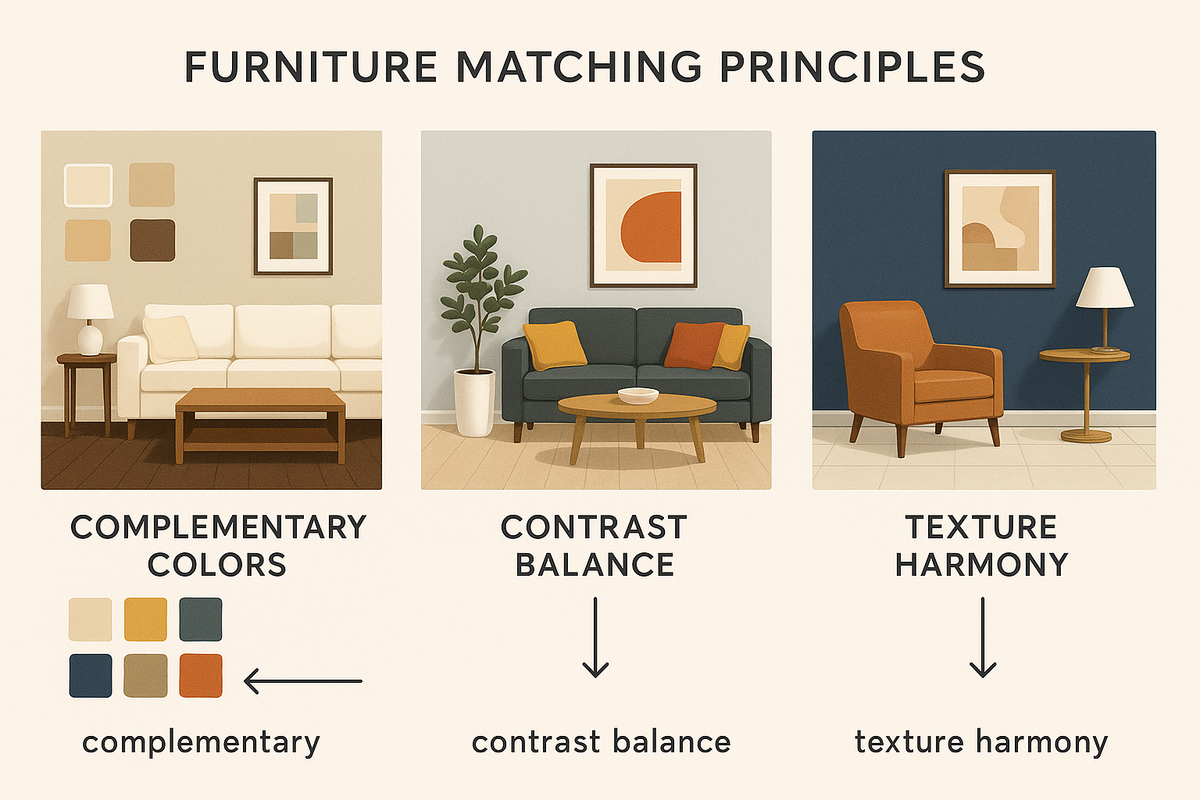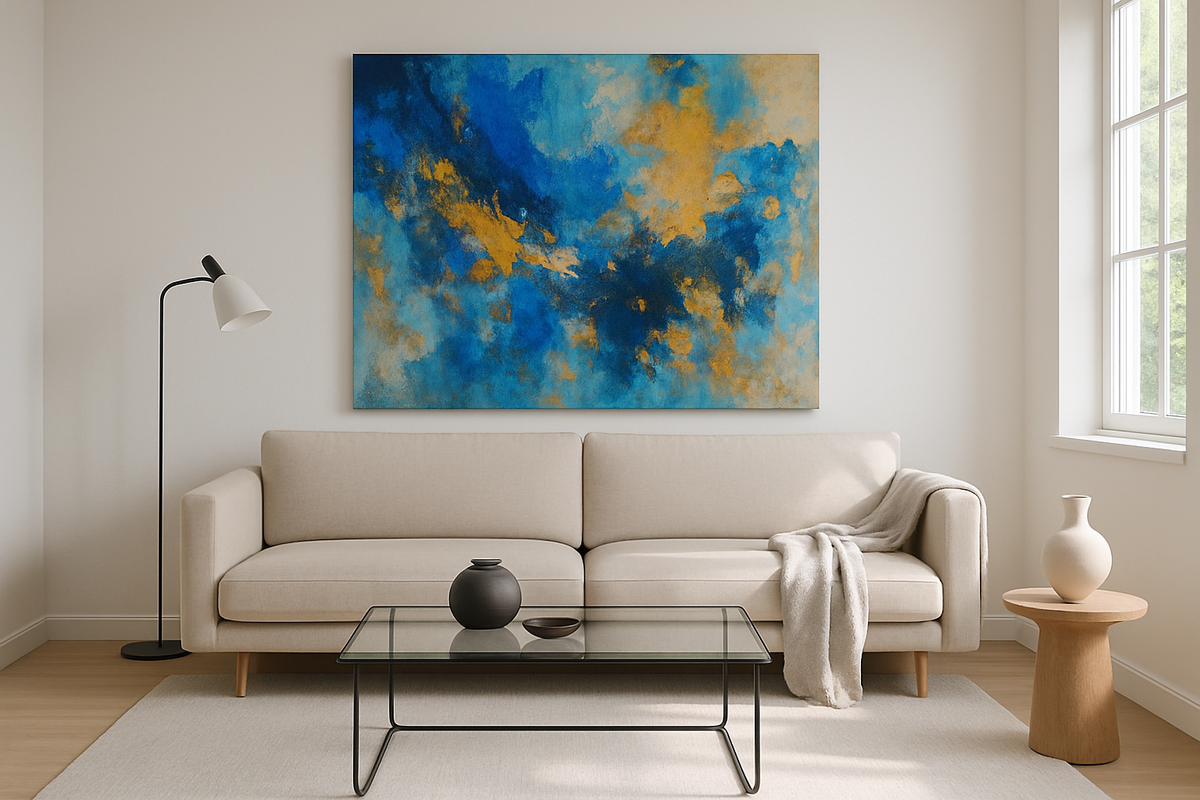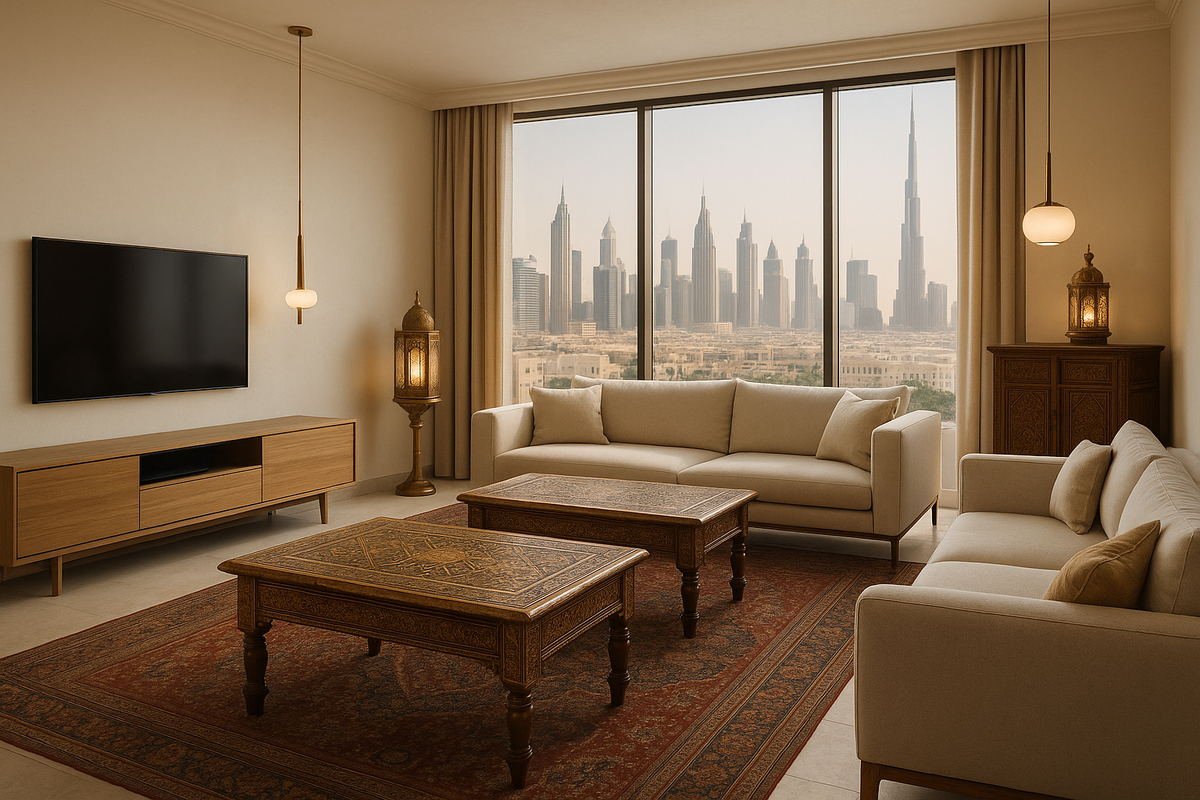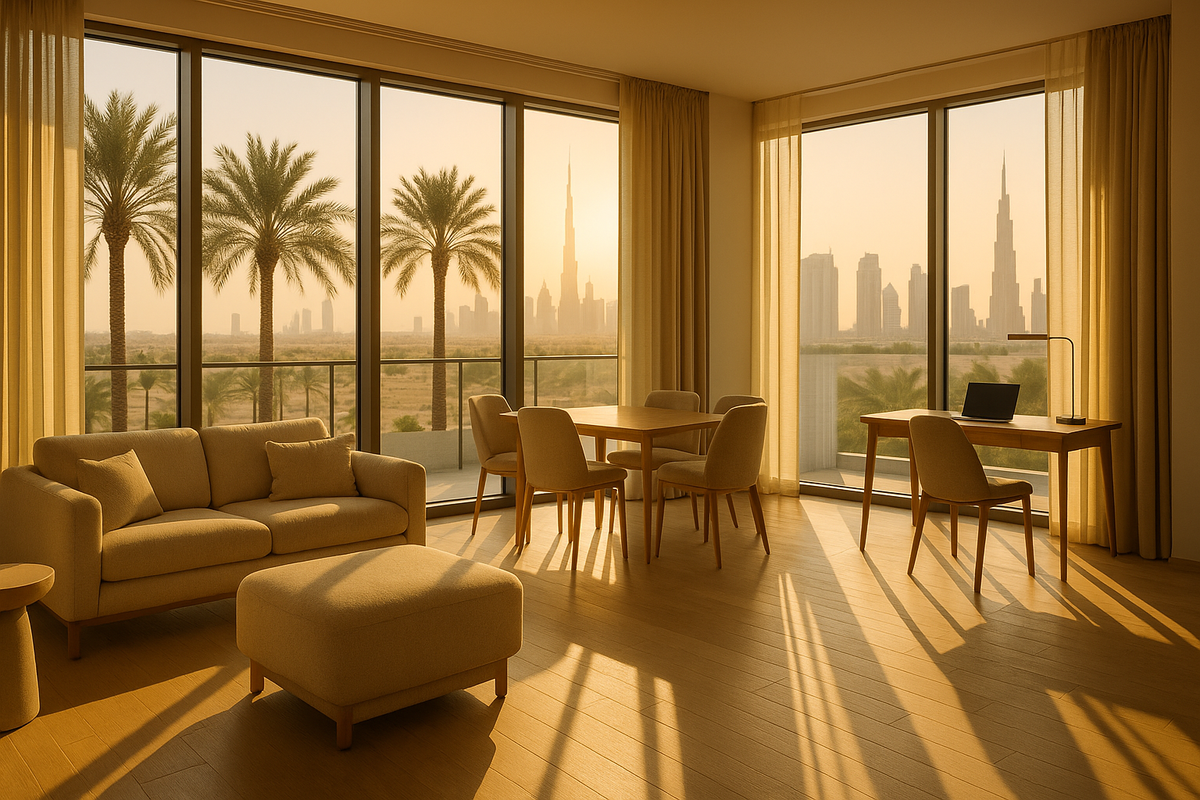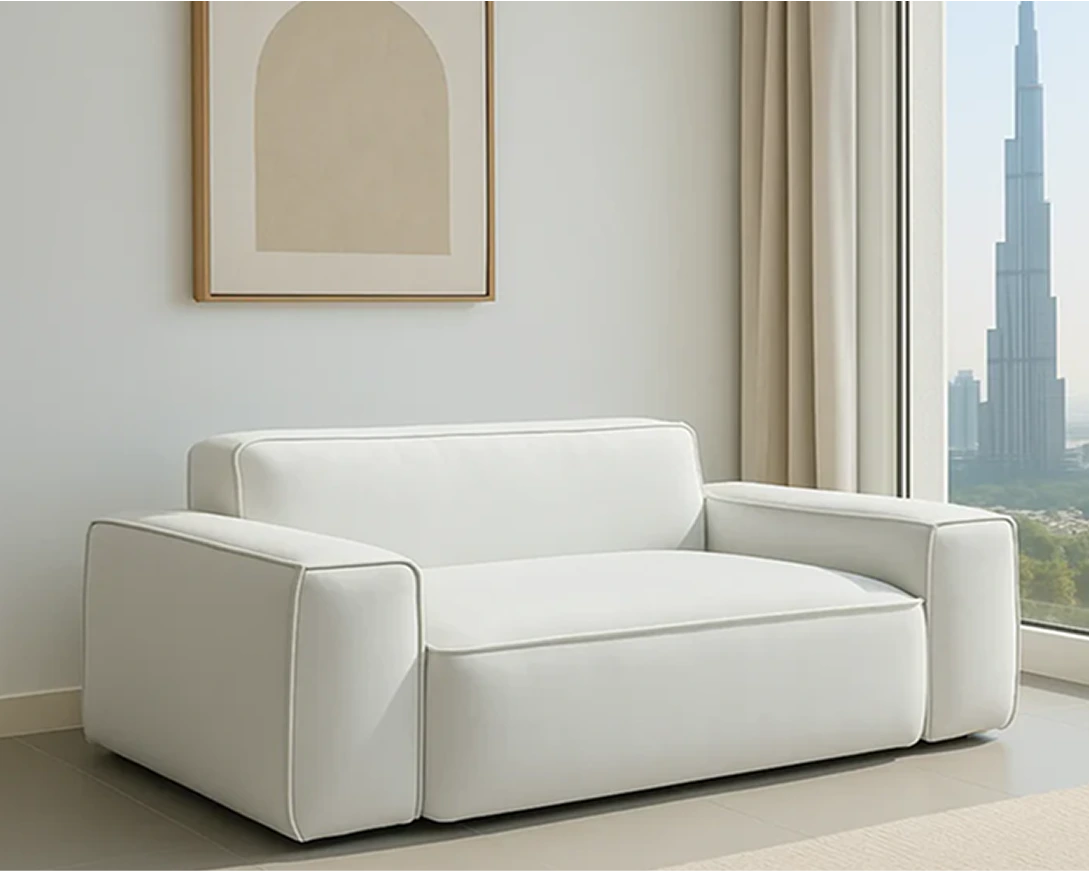Designing small to medium spaces can be a challenging task, but with the right tips and tricks, you can transform your space into a stylish and functional area. Whether you are living in a small apartment or have a compact office, these interior designing tips will help you make the most of your space. Here are eight pro tips to consider:
1. Optimize Vertical Space
When dealing with limited floor space, it's essential to think vertically. One effective way to optimize vertical space is by installing tall shelves or cabinets. These tall storage units not only provide ample storage but also draw the eye upward, creating an illusion of a larger space. Consider using floating shelves or wall-mounted storage units to keep the floor clear and maximize functionality. By utilizing vertical space, you can make the most of every inch in your small to medium space.
Another way to optimize vertical space is by utilizing the walls for storage. Install hooks or pegboards to hang items such as coats, bags, or kitchen utensils. This will free up valuable floor or counter space, making your small to medium space feel less cluttered. Additionally, consider using vertical storage solutions such as stackable bins or hanging organizers. These can be hung on walls or the back of doors to store various items, from shoes to office supplies. By thinking vertically, you can maximize storage and create a more organized and spacious environment.
In addition to shelves and wall-mounted storage, another way to optimize vertical space is by utilizing loft beds or raised platforms. These elevated sleeping or seating areas create additional space underneath, which can be used for a desk, storage, or seating. Loft beds are particularly useful in small bedrooms or studio apartments, where every square foot counts. By utilizing vertical space in this way, you can create separate zones within your small to medium space, making it more functional and visually appealing.

Photo by PNW Production from Pexels:
2. Choose Multi-functional Furniture
Investing in multi-functional furniture is a smart choice for small to medium spaces. Look for pieces that serve dual purposes to maximize the functionality of your space. For example, a sofa bed is a versatile piece of furniture that can be used as a comfortable seating area during the day and transformed into a bed for guests at night. Similarly, a coffee table with hidden storage compartments can provide a place to rest your drinks while also offering a discreet storage solution for books, magazines, or remote controls.
Another example of multi-functional furniture is a dining table that can be extended or folded when needed. This allows you to save space when dining alone or with a small group, and expand the table when hosting larger gatherings. Additionally, consider ottomans or stools that can double as storage units. These can be used as extra seating or as a place to rest your feet, while also providing hidden storage for blankets, pillows, or other items. By choosing multi-functional furniture, you can make the most of your small to medium space without compromising on style or comfort.
When selecting multi-functional furniture, it's important to consider the scale and proportion of the pieces. Opt for furniture that is appropriately sized for your space to avoid overwhelming the room. Look for sleek and streamlined designs that don't take up too much visual space. Additionally, consider furniture with built-in storage options, such as drawers or shelves, to maximize functionality. By choosing the right multi-functional furniture, you can create a space that is both practical and aesthetically pleasing.

Photo by Huy Quang Nguyễn from Pexels:
3. Use Light Colors
Light colors have the power to make a room feel more spacious and airy. When designing small to medium spaces, it's important to choose a light color palette to create an open and inviting atmosphere. Opt for neutral colors such as whites, creams, and pastels, as they reflect light and make a space appear larger. These light hues also create a sense of tranquility and can make a room feel more relaxing.
In addition to wall colors, consider using light-colored furniture and accessories to further enhance the sense of space. Choose sofas, chairs, and tables in light shades to create a cohesive and harmonious look. Additionally, incorporate light-colored curtains or blinds that allow natural light to filter through while maintaining privacy. By using light colors throughout your small to medium space, you can visually expand the room and create a bright and welcoming environment.
When using light colors, it's important to consider the balance between light and dark elements. While light colors are ideal for small spaces, incorporating some darker accents can add depth and contrast. For example, you can use darker shades for accent pillows, rugs, or artwork. This will create visual interest and prevent the space from feeling too monotonous. By striking the right balance between light and dark elements, you can create a well-designed space that feels open and inviting.

Photo by Andrea Davis from Pexels:
4. Maximize Natural Light
Natural light can make any space feel more open and vibrant. When designing small to medium spaces, it's crucial to make the most of the available natural light. Keep windows clear of heavy curtains or blinds that block sunlight. Instead, opt for sheer or light-filtering window treatments that allow sunlight to flood in. This will not only make the space feel brighter but also create a sense of openness.
In addition to window treatments, strategically placing mirrors opposite windows can help bounce light around the room. Mirrors reflect natural light and create an illusion of a larger space. Consider incorporating mirrors in various sizes and shapes throughout your small to medium space. Place them on walls or position them to reflect light from windows or other light sources. By maximizing natural light, you can create a well-lit and spacious atmosphere in your space.
To further enhance natural light, consider using light-colored or reflective surfaces. Opt for light-colored flooring, such as light wood or pale tiles, to reflect light and make the space feel more open. Additionally, choose furniture with reflective surfaces, such as glass or mirrored finishes. These surfaces will help bounce light around the room and create a brighter and more expansive feel. By maximizing natural light and incorporating reflective surfaces, you can transform your small to medium space into a bright and airy oasis.

Photo by Christopher Moon from Pexels:
5. Create Zones
Dividing your small to medium space into different zones can help maximize functionality and make the most of the available space. By creating distinct areas for different activities, you can ensure that every inch of your space is utilized effectively. Use rugs, furniture placement, or room dividers to define separate zones within a room.
For example, in a studio apartment, you can use a bookshelf or a folding screen to create a visual separation between the living area and the sleeping area. This will give the illusion of separate rooms and provide a sense of privacy. In a small office space, you can use a desk or a shelving unit to create a designated workspace. By creating zones, you can make your small to medium space feel organized and purposeful.
When creating zones, it's important to consider the flow and functionality of the space. Ensure that there is enough space to move comfortably between different areas. Avoid overcrowding by selecting furniture and accessories that are appropriately sized for each zone. By creating well-defined zones, you can maximize the functionality of your small to medium space and create a visually appealing environment.

Photo by Max Rahubovskiy from Pexels:
6. Utilize Mirrors
Mirrors are a powerful tool when it comes to small space design ideas. They not only serve a functional purpose but also have the ability to visually expand a room. Mirrors reflect light and create an illusion of depth, making a space appear larger than it actually is. Incorporating mirrors into your small to medium space can instantly brighten up the room and make it feel more spacious.
Consider placing a large mirror on a wall opposite a window to maximize the reflection of natural light. This will help create a brighter and more open atmosphere. Additionally, you can use mirrors on closet doors or as decorative accents on walls to add a touch of elegance and create the illusion of a larger space. Experiment with different shapes and sizes of mirrors to find the perfect fit for your space.
To enhance the impact of mirrors, strategically position them to reflect interesting views or focal points in the room. This will create a sense of depth and make the space feel more dynamic. Avoid placing mirrors in areas that reflect clutter or unattractive views. By utilizing mirrors effectively, you can transform your small to medium space into a visually stunning and spacious environment.

Photo by La Miko from Pexels:
7. Opt for Open Shelving
In small to medium spaces, open shelving can be a game-changer. It not only provides storage but also adds a sense of openness and visual interest. Open shelves allow you to display your favorite items while keeping them easily accessible. They can also serve as a decorative element, adding personality to your space.
Consider installing open shelves in the kitchen to showcase your collection of dishes or cookbooks. In the living room, use open shelves to display books, plants, or decorative objects. In the bathroom, open shelves can hold towels, toiletries, and other essentials. By utilizing open shelving, you can keep your space organized and visually appealing.
When using open shelves, it's important to maintain a sense of order and avoid clutter. Arrange items in a visually pleasing manner, grouping similar objects together. Use baskets or bins to corral smaller items and keep the shelves looking neat. By opting for open shelving, you can create a sense of openness and showcase your personal style in your small to medium space.

Photo by Jonathan Borba from Pexels:
8. Embrace Minimalism
When it comes to small to medium spaces, less is often more. Embracing minimalism can help create a clean and uncluttered environment that feels open and inviting. Start by decluttering and keeping only the essentials. Get rid of items that you no longer need or use regularly. This will free up valuable space and make your small to medium space feel more spacious.
When selecting furniture and accessories, opt for a minimalist aesthetic. Choose pieces with clean lines and simple designs. Avoid bulky or ornate furniture that can overwhelm the space. Focus on a few key pieces that serve both functional and aesthetic purposes. By adopting a minimalist approach, you can create a visually appealing and clutter-free environment.
In addition to furniture, consider the overall color palette and decor. Stick to a neutral color scheme with pops of color for visual interest. Keep accessories to a minimum and select items that have a purpose or hold sentimental value. By embracing minimalism, you can create a sense of calm and simplicity in your small to medium space.

Photo by Max Rahubovskiy from Pexels:
In conclusion, designing small to medium spaces requires thoughtful planning and creativity. By optimizing vertical space, choosing multi-functional furniture, using light colors, maximizing natural light, creating zones, utilizing mirrors, opting for open shelving, and embracing minimalism, you can transform your space into a stylish and functional haven. Remember to visit Klekktic for more design ideas for small spaces and to find the perfect furniture and accessories to suit your needs.
| Designing Tips for Small to Medium Spaces |
|---|
| 1. Optimize Vertical Space |
| 2. Choose Multi-functional Furniture |
| 3. Use Light Colors |
| 4. Maximize Natural Light |
| 5. Create Zones |
| 6. Utilize Mirrors |
| 7. Opt for Open Shelving |
| 8. Embrace Minimalism |
FAQ
1. How can I make a small space feel larger?
- Optimize vertical space by using tall shelves or cabinets.
- Choose multi-functional furniture to maximize functionality.
- Use light colors to create an open and airy atmosphere.
- Maximize natural light by keeping windows clear and using mirrors.
2. What are some multi-functional furniture options for small spaces?
- Sofa beds that can be used as seating during the day and a bed at night.
- Coffee tables with hidden storage compartments.
- Dining tables that can be extended or folded when needed.
- Ottomans or stools with hidden storage.
3. How can I make a small space feel brighter?
- Use light colors on walls, furniture, and accessories.
- Maximize natural light by keeping windows clear and using light-filtering window treatments.
- Incorporate mirrors to reflect light and create an illusion of a larger space.
- Use light-colored or reflective surfaces for flooring and furniture.
4. How can I create separate areas in a small space?
- Use rugs, furniture placement, or room dividers to create distinct zones.
- Utilize loft beds or raised platforms to create additional space underneath.
- Use bookshelves or folding screens to visually separate different areas.
5. How can mirrors be used to enhance small spaces?
- Place mirrors on walls opposite windows to maximize the reflection of natural light.
- Use mirrors on closet doors or as decorative accents to create the illusion of a larger space.
- Position mirrors to reflect interesting views or focal points in the room.
6. What are the benefits of open shelving in small spaces?
- Open shelving provides storage while adding a sense of openness and visual interest.
- It allows you to display your favorite items and add personality to your space.
- Use open shelves in the kitchen, living room, or bathroom to keep your space organized and visually appealing.
7. How can minimalism help in small spaces?
- Declutter and keep only the essentials to free up valuable space.
- Choose furniture and accessories with clean lines and simple designs.
- Stick to a neutral color scheme and keep accessories to a minimum.
- Focus on a few key pieces that serve both functional and aesthetic purposes.
